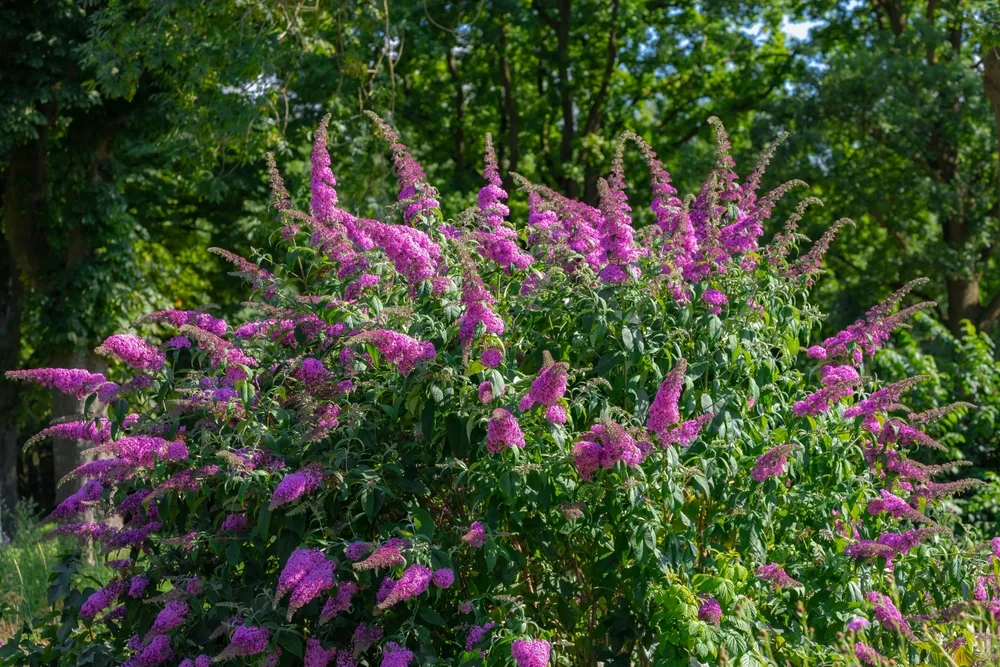
The butterfly bush (Buddleja davidii) is a striking plant native to China, known for producing large amounts of pollen that draw in many pollinators.
At first glance, this might seem like a great addition to any garden, but this plant can quickly become invasive and take over your yard.
Many people are aware of the damage invasive species can cause when not controlled, and the butterfly bush is no different. There are also a few other drawbacks to consider before celebrating this plant.
Many gardeners are attracted to butterfly bushes because they produce stunning, cone-shaped flowers, usually in shades of purple or pink, that butterflies are drawn to, much like moths to a flame.
The blooms are plentiful, lasting from summer through fall. Once they’re established, they require minimal upkeep.
It’s easy to assume that having a butterfly bush in your garden is beneficial to the environment. However, the harsh reality is that, in the long term, you may be doing more harm than good to both the butterfly population and native plants.
An Invasive Plant That’s Not So Great for Butterflies
The primary issue with butterfly bushes is their invasive nature. For a species to be labeled as invasive, it must meet certain criteria, such as easily adapting to new environments, reproducing rapidly, and causing harm to local plants, animals, or property.
Butterfly bushes are considered invasive because they outcompete native species and can cause significant environmental damage.
The consequences can be unpredictable and particularly destructive, sometimes leading to the extinction of native species and wildlife on a large scale.
Additionally, a single flower spike on a butterfly bush can produce over 40,000 seeds that can travel far and stay viable in the soil for up to five years, making this plant extremely hard to eliminate.
While butterfly bushes do attract butterflies and other pollinators, nearby plants may suffer from a lack of pollination.
Moreover, although butterflies are drawn to the bushes, these plants cannot support their caterpillars, meaning butterflies cannot lay their eggs on them.
As a result, when butterfly bushes dominate the area and outcompete native species, the butterfly population may actually decline because they cannot reproduce.
Better Alternatives to Plant
Fortunately, there are other plants you can choose that also attract butterflies and other pollinators. For example, the Gayfeather (Liatris spicata) is a perennial with stunning, purple, feather-like flowers that appear in mid-summer.
Unlike the butterfly bush, Gayfeather grows well with other plants and attracts butterflies, hummingbirds, and bees.
Another excellent option is the Buttonbush (Cephalanthus occidentalis), which has white, cylindrical blooms and can grow up to 12 feet tall.
If space is a concern, there are smaller varieties available. This bush not only attracts butterflies, bees, and hummingbirds, but it also supports butterflies by providing a place for them to lay their eggs.
Lastly, consider planting Coneflower (Echinacea), which has beautiful petals in various colors with cone-shaped centers that pollinators love.
This perennial thrives almost anywhere in the United States, tolerating harsh winters and drought conditions. It attracts butterflies, bees, and birds.
Any of these alternatives would be a more environmentally friendly choice for your garden than the butterfly bush.
